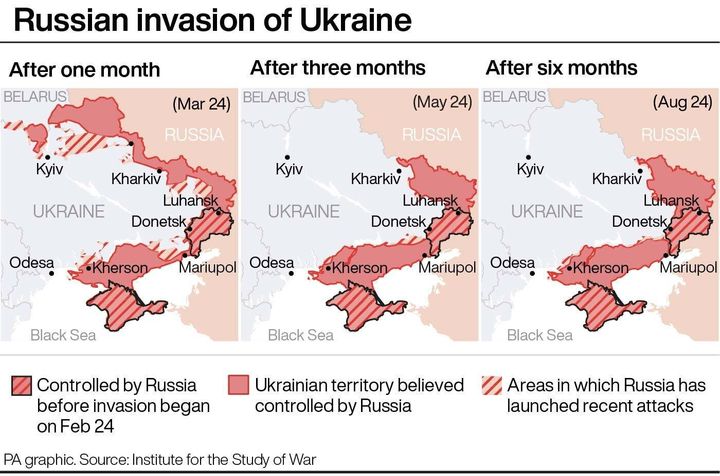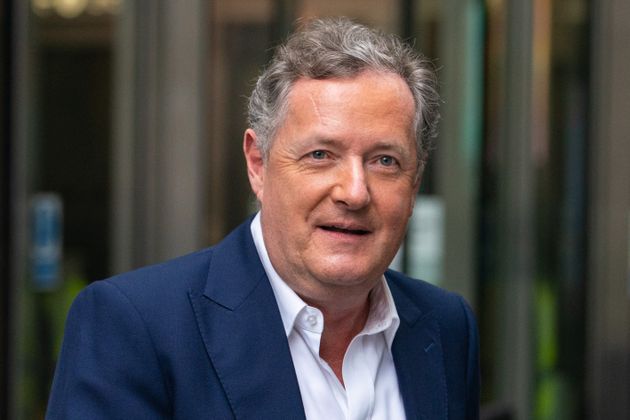Kyiv is successfully pushing back the frontline of the war, forcing Russia’s troops off Ukrainian land. Meanwhile, Moscow is upping the ante through more and more extreme measures.
Here’s what you need to know about all the latest developments.
1. Chaos for Russia’s mobilisation push
Russian president, Vladimir Putin announced a “partial mobilisation” for the country’s reserve troops on September 21.
Advertisement
This was meant to enlist 300,000 men with previous military experience to boost the Russian forces, although the official decree did not specify a required figure.
But just a week later, Putin announced there would be “corrections” to the call-out after there were reports that people with no experience or those beyond the draft age have been called up.
He said: “For example, I’m thinking of fathers of many children, or people suffering from chronic diseases, or those who are already past conscription age.”
Now he has deferred conscription for additional categories of students, too.
More than 200,000 people have already been drafted in, according to the Kremlin.
Meanwhile, Russians have allegedly been fleeing the country in droves to avoid being called up to war and anti-war protests have broken out all over Russia. Data shared by Bloomberg.com revealed that 400,000 Russians have escaped to nearby states.
Advertisement
According to OVD-Info, 2,418 people were detained for protesting against mobilisation between September 21 and 26.
2. And Russia still isn’t sure about its new external borders
Moscow annexed four regions of Ukraine last week, after holding sham referendums in each area – Kherson, Zaporizhzhia, Donetsk and Luhansk.
Putin has since claimed that all four regions wanted to join Russia, although almost the entire international community still believes these areas are part of Ukraine.
And, in claiming the land for Russia without Ukraine’s permission, Putin has officially broken international law.
Advertisement
However, Russia does not control any of these areas completely – many pockets are still rebelling against Moscow rule. As a result, Russia has still not entirely confirmed where it thinks its new borders are, especially as Ukraine continues to reclaim land.
Kremlin spokesperson Dmitry Peskov refused to give a solid answer about where the borders of Kherson and Zaporizhzhia regions should be following the annexations.
Asked by CNN, he said: “I will leave this question unanswered.”
He then added: “But I repeat once again: certain territories there will be returned and we will continue to consult with the population, that expresses a desire to live in Russia.”
This is only made more confusing by the decision to include these annexed areas in the Russian TV weather forecasts.
Advertisement
3. Ukraine’s counteroffensive continues
Ukraine has reclaimed astounding quantities of land in the east over the last few weeks, amid claims that Russian soldiers fled or surrendered.
President Volodymyr Zelenskyy has remained confident about Ukraine’s success, believing the whole country – including the annexed land – can be reclaimed.
But, as Zelenskyy, noted, this reclaimed land is severely damaged.
He shared images of the recently liberated city of Lyman, showing how – even where Ukrainians comfortably declared victory – there is extensive tragedy left.
Zelenskyy wrote: “Our Lyman after the occupier. All basics of life have been destroyed here. They are doing so everywhere in the territories they seize.”
Advertisement
4. EU announces price cap on Russian oil and ban
The 27 states of the bloc all agreed to a sanctions package on Wednesday. This is part of the ongoing sanctions meant to reduce Putin’s ability to attack Ukraine by reducing its income and forcing it to sell its oil abroad for less.
It’s also the eighth round of sanctions from the EU since Moscow invaded in February, signed off on Wednesday.
In response, European Commission president Ursula von der Leyen wrote: “We will never accept Putin’s sham referenda nor any kind of annexation in Ukraine. We are determined to continue making the Kremlin pay.”
The West in general is also trying to reduce its reliance on exported Russian fossil fuels, so that Moscow can no longer use it for leverage.
5. Zaporizhzhia nuclear power plant concerns grow
Ukraine’s largest nuclear power plant is still in the line of fire. Russia have attempted to annexe the region, and it has been occupied since the start of the war, although the plant itself is still operated by Ukrainian technicians.
Advertisement
Head of the International Atomic Energy Agency Rafael Grossi is also expected to visit the Kremlin to discuss de-escalating the situation.
Ukraine’s government of Zaporizhzhia said this week that, “the enemy fired rockets at the regional centre and the outskirts of the city” during the night, meaning “infrastructure facilities were destroyed”.
Former RAF Air Marshal Edward Stringer told Sky News that Putin’s continued attacks on the region meant Putin was trying to “keep the world worried” about his aggression, and “employing terror against the civilian population.”
Despite these attacks near the power plant, the Kremlin has promised it is “fully committed” to not fighting a nuclear war.
It’s worth remembering, only last month Putin promised he was “not bluffing” when it came to using “all the means available to us” to win the war.
Advertisement

MARINA MOISEYENKO via Getty Images
6. Russia sounds warning to the US
Russia’s ambassador to the US, Anatoly Antonov, said Washington’s attempts to send more military aid to Ukraine were only increasing military tensions between Russia and the West.
He added that this was an “immediate threat” to Moscow, adding: “We call on Washington to stop its provocative actions that could lead to the most serious consequences.”
Moscow also warned that the US is a “participant of the conflict” after Washington announced it was sending another $625 million (£547 million) in military aid to Ukraine, along with advanced US weaponry.
In total, Washington committed nearly $17 billion (£15.15 billion) in military support since the war began.
Advertisement





























